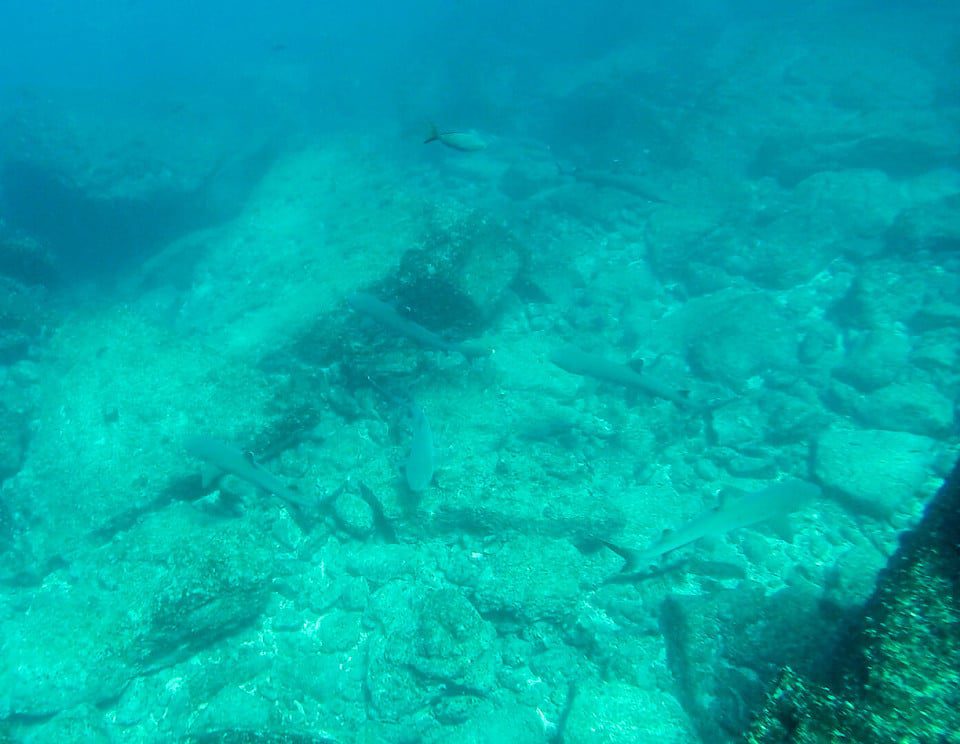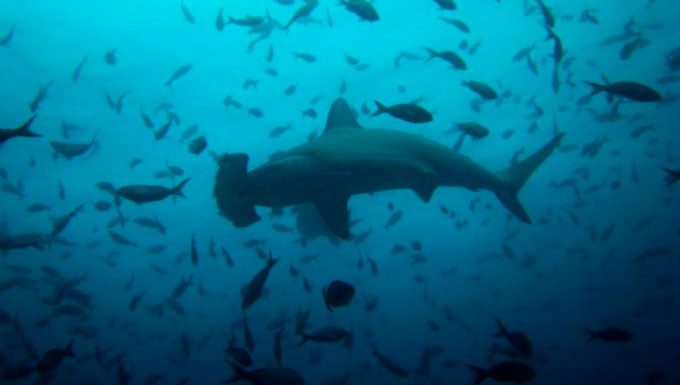Sharks. We’ve all come to fear them in one way or another, be it through movies, television, cartoons or books. They seem to have a pretty bad rap in the world today, even if there truly have been more deaths resulting from selfies than sharks. Yet, despite the questionable aura of fear that surrounds them, these creatures continue to fascinate us with their majestic prowess underwater.
When it comes to the Galapagos Islands, visitors come to see the “big” stuff underwater (and on land too! Galapagos Big15), which typically includes whales, sea turtles, rays and the colossal whale shark. And yes, even sharks too. And the greatest part of all? Nobody hesitates to jump in the waters to check them out!
TALK TO A DESTINATION EXPERT

Diego Zapata

Rosa Mena

Sandy Lara

Diego Zapata

Rosa Mena

Sandy Lara
What makes the Galapagos such an ideal place for friendly sharks?
In the Galapagos archipelago, you have the presence of these big creatures thanks to the cold water currents that come through.
What’s more, is that Galapagos sharks are “threat free” thanks to their relatively untouched sources of food. This lack of food scarcity in their environment has made them pretty docile creatures, especially when it comes to food items they don’t need (read: us humans). Additionally, the absence of industrial fishing in the Galapagos allows the ocean to produce more than what humans take from it, meaning the food chain remains intact.
The scary shark stereotype doesn’t just apply to a shark in the Galapagos. W qhile in other places, due to a disturbance in the sharks’ food supply, or simply because there are more aggressive species present, when a shark is known to be near, people quickly get out of the water. In the Galapagos Islands, when there is a shark near, no one can wait to get in the water. That is how Galapagos sharks roll.
And who are these friendly Galapagos sharks?
Galapagos sharks are known for their fearlessness towards humans, which is similar to pretty much every other species on the islands. They simply can’t be bothered with humans. If you find yourself in their way, they will just evade you like a post in the middle of the road. This means visitors can get a glimpse of several species of sharks up close with little to zero trouble of getting hurt. Some of the most common species of sharks that you will see while snorkeling in this magical place are the following:

White-tip reef sharks
Triaenodon obesus, commonly called tintoreras (in Spanish) can grow to be up to 1.70 meters (around 67 inches) long. They are seen throughout the whole archipelago, but most frequently are spotted up in North Seymour, Champion Islet, Gardner Islet, Punta Vicente Roca, and Tagus Cove.
Black-tip reef sharks
They are also generally seen throughout the archipelago but are less common than their white-tip reef cousins.
Port Jackson sharks
Also known as horn shark because of a small horn sticking out of their backs that serves as a defense mechanism. They have “grinder” teeth to help them eat mollusks and crabs along the seafloor. Playful sea lions love teasing horn sharks by nudging them, the poor horn sharks just can’t get them off their backs!
Scalloped hammerhead shark

These hammerheads a perfect mixture of currents and food to in the Galapagos waters that make it one of their favorite reproduction spots. They are pelagic (open water) feeders and can be seen on Genovesa Islands, along its underwater cliffs.
Galapagos shark
They bear the name of the archipelago even though they are not an endemic species. They are less easy to spot but easy to recognize, due to their very typical shark shape. They have a pointy nose like most people expect sharks to have, unlike the rounded nose of the tintoreras.
All in all, the Galapagos presents an equally enlightening and thrilling experience (with zero danger) for all those with an aversion to sharks. The enchanted isles truly do give individuals an opportunity to eradicate their fears and expectations of what Galapagos sharks have in store for us humans. It’s an unforgettable experience that you’ll hopefully get to experience more than once on your Galapagos cruise!

Javier Garcia

Eduardo Silva

Carolina Escobar
START PLANNING YOUR TRIP

Javier Garcia

Eduardo Silva

Carolina Escobar
Get in touch for more
CONTACT US


